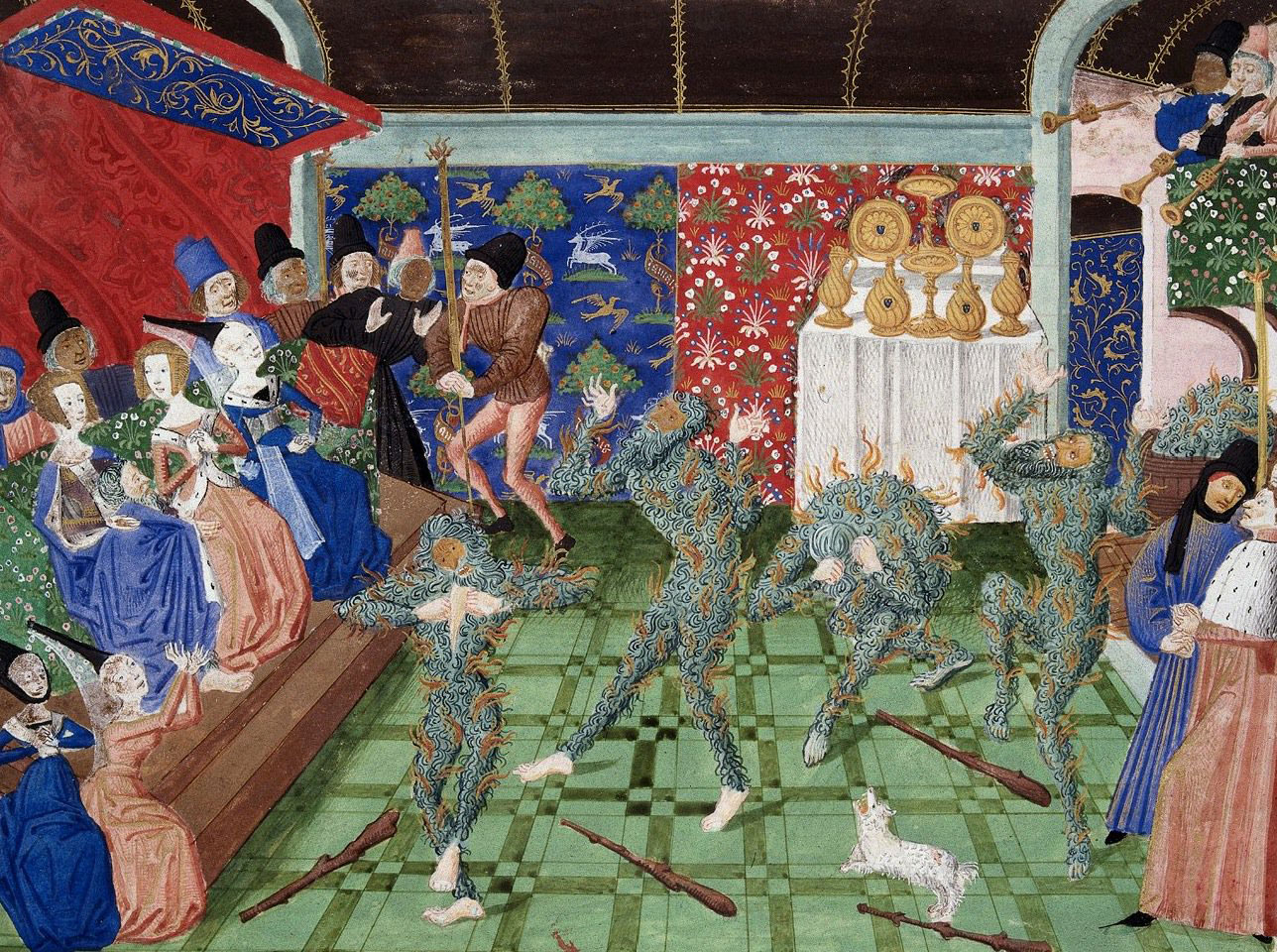
Jane Burden Morris: Red House Daisies
William Morris Red House Tiles Arts & Crafts Pre-Raphaelite Victorian Medieval
Main Catalog Blue & White Textile Designs Site Map Search FAQ

William Morris Red House Tiles Arts & Crafts Pre-Raphaelite Victorian Medieval
Main Catalog Blue & White Textile Designs Site Map Search FAQ
Evolution of Daisies Woodblock Daisy Blue & White Daisies Early Green Fronded Daisies Membland

You know what a babyishly hopeful creature I always am. ~Jane Burden Morris

First, we'll talk about Jane's daisies and then move on to Morris and daisies and why they are so important.
During the first years of their marriage, while living at Red House, Morris designed the first daisies and Jane implemented them. Jane Morris's first daisies were embroidered on a serge that she was quite excited to have found in a shoppe. Serge was a popular material in the 19th century, and hers was dyed with indigo and sulphuric acid. Topsy (William's pet name used by family and familiars) and Jane made a series of curtains and wall hangings. After the Morrises moved from Red House, the curtains hung in the dining room of Edward Coley Burne-Jones estate, The Grange. The wall hanging were later discovered lining a dog-basket at Kelmscott Manor in the 1960s.
Several versions of daisy tile took their inspiration from Jane's original daisy pattern, as did Columbine.
Jane Morris Daisies are available in 4.25 and 6 inch tiles.
The Jane Morris Wodehouse Daisy is available with a medieval blue or warm white background.
4.25 inch square tiles: $53 each
6 inch square tiles: $63 each

Morris Daisies abound!
Evolution of Daisies Tiles and Backsplash
Jane Morris Blue Serge Daisies (this page)
Blue and White Daisy TilesCollaboration with William De Morgan and Philip Webb: Membland, Longden and Membland Backsplash

Now that the business end of things is out of the way, let's talk about the historical important of daisies for Morris and his circle.
Such as men call daisies in our town.
For them I have so great an affection,
As I have said, at the start of May,
That in my bed there dawns no day
When I'm not up and walking in the mead
To see this flower to the sun freed
~Chaucer (1340 - 1400), The Legend of Good Wimmen
Daisies are the earliest and most recurring theme in Morris's tile and textiles. They appear in so simple a tile as Columbine but make their appearance in Membland, The Forest, and many others. The rose, symbol of true love, appears far less often than the daisy, which for Morris and Chaucer honors women, their strength and fidelity. In The Romaunt of the Rose, Chaucer makes many disparaging remarks. In the Prologue to The Legend of Good Wimmen, the God of Love appears to Chaucer in a dream dressed in the colors of the daisy take him to task for his irreverence. Good Wimmen is his redemption.

The first daisy pattern was designed in 1862 by William Morris and embroidered in wool by Jane Morris, her sister Bessie, and friends to decorate Red House, Jane and William's medieval-inspired home. Red House is built along the path that the pilgrims in Chaucer's Canterbury Tales would have taken on their way from London to the shrine of St. Thomas Becket's cathedral in Canterbury. So we can conclude that Chaucer was a big deal for Morris. The original design is inspired by 'Dance of the Wodehouses', taken from a late fifteenth-century manuscript, Froissart's Chronicals. The daisies are against the back wall.

Dance of the Wodehouses, inspiration for Morris Daisies

Definition: A Wodehouse, or Wodewose, is a mythic wild man, something of a cross between a berserker (Noridic crazy man, from which the term "berserk" comes) and a Green Man. The wodehouse was a savage, naked or ivy-covered, a satyr or faun. Morris was enchanted with mythic and natural symbols, such as Yggdrasil (The Viking Tree of Life).
Morris discovered the dancing wodehouses in a painting from Froissant's Chronicals, a 15th century manuscript depicting the Bal des Ardents (Ball of the Burning Men), a masquerade ball held on 28 January 1393 in Paris. At the Ball, Charles VI of France performed in a dance with five members of the French nobility, during which the dancers' costumes, made of linen soaked in resin and flax, caught fire from a torch brought in by a spectator.

William Morris bed cover detail, embroidered by Jane and May Morris

Jane and May Morris Back Story
William Morris: The Soul of Arts and Crafts
Morris Tapestries and Textiles
Applications, Care, and Dimensions
William Morris Tile • Site Map • Catalog • How to Order Tile • Privacy Statement • Contact
Copyright information: Images of tile products on this website are ©William Morris Tile, LLC. They are derivative works requiring considerable creative effort. You are welcome to use the images, with attribution, for any non-commercial purpose, including displaying them on your blog or personal website. You may not use them for any commercial purpose without written permission, including but not limited to creating counted cross-stitch patterns, calendars, or any other commercial purpose. Contact me for images.